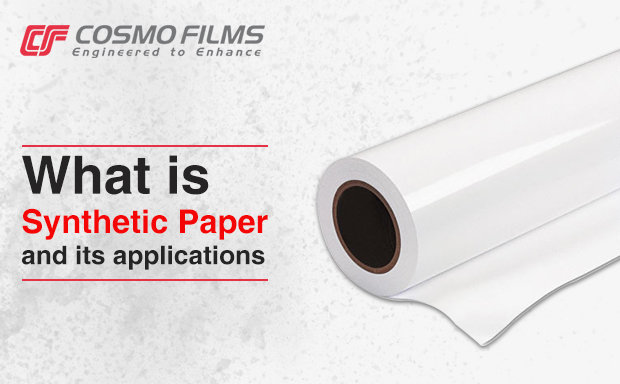Synthetic paper is manufactured employing synthetic resin derived from petroleum as the main material. Hence it has properties analogous to the plastic film. Its look is close to that of paper produced from wood pulp. Also, several synthetic papers have properties just like those of regular paper. Synthetic papers were engineered to be durable like plastic. However, they appear, feel and print like traditional paper. Resin-based synthetic papers are classified into 2 types as per their manufacturing process namely fiber synthetic paper and film synthetic paper. Today film synthetic paper is more popular.
Have properties of both conventional paper and film
The synthetic paper shares certain properties of paper as well as film. The former is resin-based. So, they have some beneficial properties of film including grease resistance, tear resistance, as well as water resistance. It also has paper’s radiant white, printable surface.
Used for printing, packaging and labeling
Synthetic papers provide different functionalities for a range of applications in industries including pharmaceuticals, cosmetics as well as food & beverages for printing, packaging and labeling. The former is both water-proof and durable. Other important properties include oil resistance, chemical resistance, as well as tear resistance. These superior performance properties as well as superior printability, resulted in synthetic properties high popularity as materials of choice in numerous end user industries.
Durable with ease of printability Synthetic papers are tough and also have the property to support high-quality printing. All uses of synthetic papers leverage these qualities in some form. Synthetic papers are employed in any application requiring long-term durability. They are tear-resistant, chemical-resistant, water-resistant and usually have higher durability when benchmarked against the paper. As bonus synthetic papers possess ease of printability.
Used in medical, horticultural and chemical applications
A major benefit that synthetic paper has over conventional paper is resistance to yellowing and a far longer shelf life. Synthetic paper is employed in a range of applications needing strength coupled with inbuilt resistance to the elements. For instance, chemical resistant drum labels. Medical applications including labels or patient’s wristbands where it is paramount to have moisture as well as tear resistance. The use of synthetic paper is widespread for outdoor tag uses for nursery, lumber tags and miscellaneous horticultural products. Synthetic paper is leveraged for printing horticultural tags for plants as well as trees. The former is also employed in tags used for labeling different grades of lumber.
Have properties of both conventional paper and film
The synthetic paper shares certain properties of paper as well as film. The former is resin-based. So, they have some beneficial properties of film including grease resistance, tear resistance, as well as water resistance. It also has paper’s radiant white, printable surface.
Used for printing, packaging and labeling
Synthetic papers provide different functionalities for a range of applications in industries including pharmaceuticals, cosmetics as well as food & beverages for printing, packaging and labeling. The former is both water-proof and durable. Other important properties include oil resistance, chemical resistance, as well as tear resistance. These superior performance properties as well as superior printability, resulted in synthetic properties high popularity as materials of choice in numerous end user industries.
Durable with ease of printability Synthetic papers are tough and also have the property to support high-quality printing. All uses of synthetic papers leverage these qualities in some form. Synthetic papers are employed in any application requiring long-term durability. They are tear-resistant, chemical-resistant, water-resistant and usually have higher durability when benchmarked against the paper. As bonus synthetic papers possess ease of printability.
Used in medical, horticultural and chemical applications
A major benefit that synthetic paper has over conventional paper is resistance to yellowing and a far longer shelf life. Synthetic paper is employed in a range of applications needing strength coupled with inbuilt resistance to the elements. For instance, chemical resistant drum labels. Medical applications including labels or patient’s wristbands where it is paramount to have moisture as well as tear resistance. The use of synthetic paper is widespread for outdoor tag uses for nursery, lumber tags and miscellaneous horticultural products. Synthetic paper is leveraged for printing horticultural tags for plants as well as trees. The former is also employed in tags used for labeling different grades of lumber.

